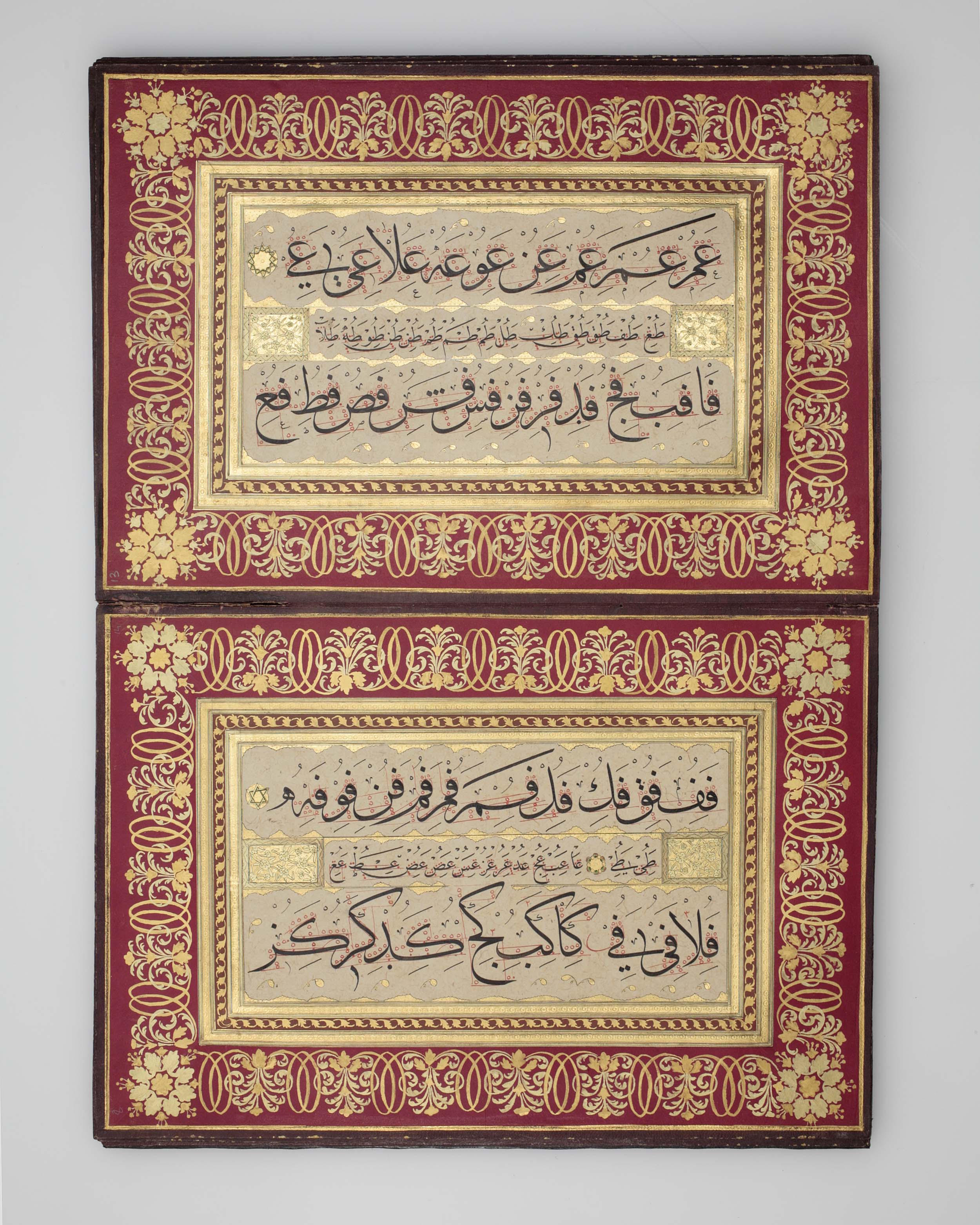Mehmed Şevkî Efendi on:
[Wikipedia]
[Google]
[Amazon]
Qur'an copied by Mehmed Şevkî Efendi. Sakıp Sabancı Museum
 Mehmed Shevki Efendi (; Modern Turkish: ''Mehmed Şevki Efendi''; 1829 Kastamonu–1887 Istanbul) was a prominent Ottoman
Mehmed Shevki Efendi (; Modern Turkish: ''Mehmed Şevki Efendi''; 1829 Kastamonu–1887 Istanbul) was a prominent Ottoman
Online:
/ref>
 Mehmed Shevki Efendi (; Modern Turkish: ''Mehmed Şevki Efendi''; 1829 Kastamonu–1887 Istanbul) was a prominent Ottoman
Mehmed Shevki Efendi (; Modern Turkish: ''Mehmed Şevki Efendi''; 1829 Kastamonu–1887 Istanbul) was a prominent Ottoman calligrapher
Calligraphy () is a visual art related to writing. It is the design and execution of lettering with a pen, ink brush, or other writing instruments. Contemporary calligraphic practice can be defined as "the art of giving form to signs in an exp ...
. He is known for his Thuluth
''Thuluth'' (, ' or , '; , ''Sols''; Turkish: ''Sülüs'', from ' "one-third") is an Arabic script variety of Islamic calligraphy. The straight angular forms of Kufic were replaced in the new script by curved and oblique lines. In ''Thuluth'', ...
- Naskh works, and his style developed into the ''Shevki Mektebi'' school, which many contemporary calligraphers in the style take as a reference.
Life and career
Born inKastamonu
Kastamonu, formerly Kastamone/Castamone () and Kastamon/Castamon (), is a city in northern Turkey. It is the seat of Kastamonu Province and Kastamonu District.
, a town near the Black Sea, in 1829, Mehmed Shevki Efendi was the son of Ahmad Agha from Tajc. He was sent to Istanbul at a young age, where he was raised by his uncle.
He received his earliest formal training from his uncle, Mehmed Hulûsi Efendi (d. 1894) and obtained a Diploma at the age of fourteen. He was trained in the ''thuluth'' and the ''naskh'' scripts. Later, his uncle wanted him to study with a more experienced master and sought to apprentice him to Kazasker Mustafa Izzet Efendi. However, the boy refused to study with any master, other than his uncle. Ultimately, he taught himself advanced techniques from calligraphic works of Hâfiz Osman and other great calligraphers. By remaining with his uncle, rather than joining a different school, Mehmed Şevkî had the freedom to develop his own style. This style became known as ''û Şevki mektebi eb''. He certified a number of calligraphers, who went on to enjoy exceptional careers including Mohammad Hosni.
Şevkî Efendi was the last in a long line of calligraphers, beginning with Seyh Hamdullah in the 15th century, who refined and improved the '' sülüs'' and '' naskh'' scripts. He achieved a "height of perfection never attained previously, nor surpassed since."
He taught penmanship in the Ministry of War, where he trained military scribes and also worked in several schools. He also taught calligraphy to the sons of Sultan Abdulhamid II.
He died on 7 May 1887 following a stroke and was buried next to his uncle, Hulûsi Efendi, in the Merkezefendi Cemetery. He was survived by three daughters and a son.
Work
He wrote 25 copies of the Q'ran and also produced many personal prayer books. He is the author of the work, ''The Thuluth & Naskh Mashqs.'' His work also includes calligraphic compositions, which he signed "Muhammed Shawki".Bloom, J. and Blair, S.S. (eds), ''Grove Encyclopedia of Islamic Art & Architecture'', Volume 1, Oxford University Press, 2009, p. 475; Christies AuctionsOnline:
/ref>
See also
*Culture of the Ottoman Empire
The culture of the Ottoman Empire evolved over several centuries as the ruling administration of the Turkish peoples, Turks absorbed, adapted and modified the various native cultures of conquered lands and their peoples. There was influence from t ...
*Islamic calligraphy
Islamic calligraphy is the artistic practice of penmanship and calligraphy, in the languages which use Arabic alphabet or the Arabic script#Additional letters used in other languages, alphabets derived from it. It is a highly stylized and struc ...
* List of Ottoman calligraphers
* Ottoman art
References
{{DEFAULTSORT:Mehmed Sevki Efendi Culture of the Ottoman Empire Calligraphers from the Ottoman Empire 1829 births 1887 deaths Muslim artists 19th-century artists from the Ottoman Empire